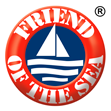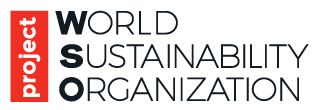The Problem
One unique feature of seahorses is male pregnancy: males, not females, incubate embryos in a specialized structure called “brood pouch”. At hatching, the male expels the fry. This allows the females to generate greater numbers of eggs resulting in fast reproduction.
Sea horses are distributed mostly in the shallow tropical and temperate saltwater worldwide. Their common habitats include areas such as estuaries, coral reefs, seagrass beds and mangroves.
There are many reasons why seahorses are tumbling down in numbers. For instance, the legal and illegal capture of the species for decorative purpose, such as souvenir, for aquarium and for the manufacturing of traditional Chinese medicine. For this last, it is estimated that roughly 37 million seahorses are captured every year.
Seahorses are often captured alongside other commercial fishing. As last, their habitat is threatened by costal development which cause pollution and deforestation, affecting their proper growth and reproduction.

Environnemental consequences
Possible Solutions
There are many steps that can be taken to prevent the extinction threat to seahorses which are a flagship species of marine environments.
Firstly, habitat/site and resource protection and management would ensure continued free movement and propagation of the seahorses.
Besides, species management by controlling the harvest and trade of seahorses is crucial to safeguard them. 150 countries in the world have signed the Convention on International Trade in Endangered Species (CITES) which prevents commercial trading of wild species like seahorses if their existence is under threat. The Hippocampus species are currently listed under CITES and these legislations need to be implemented. Moreover, research on the taxonomy, population trends, habitats of the seahorses is a call of the day.
Finally, awareness should be promoted about the seahorses through formal education, training, and campaigns
WSF Activities and initiatives
WSO’s Friend of the Sea project is taking the following initiatives to preserve the seahorses as part of their mission of certifying products coming from sustainable fishing and aquaculture:
- Communicate with governments, non-governmental organizations, media, and academic institutions to make them aware of the distressing situation of many seahorse species.
- Liaise with aquaculture and fishing companies, industrial and other relevant business leaders to remind them of their duties towards environmental sustainability and urge them to follow eco-friendly policies.
- Participating and organizing various webinars, symposiums, and conferences to educate local communities on the importance of seahorses so that they and become vigilante against their illegal trading and also help in data collection related to their habitats and population trends.
- Launch awareness campaigns in change.org or similar platforms.
Call to action
- Promote the establishing of marine protected areas which would limit commercial activities such as finishing, tourism, etc. so that habitats of seahorses would not be disturbed.
- Allocate enough funding to conservation biologists, ecologists, evolutionists and molecular biologists who are working on seahorses.
- Purchase only Friend of the Sea certified sustainable products, including seafood, UV Creams, Omega3.
- Sign Friend of the Sea Petition on Change.org.









